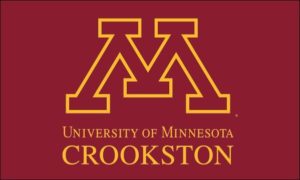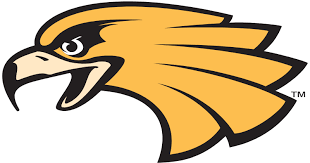
Beneficial, Budget-Friendly Bachelor’s Education at UM-Crookston
The University of Minnesota-Crookston appears in our ranking of the 50 Most Affordable Online Degree Programs For In-State Students. The University of Minnesota-Crookston is a public, coed AASCU member in Greater Grand Forks. It offers:- 35 majors
- 23 minors
- seven certificates
- engage in Agricultural Research Center projects
- join the FFA Chapter
- intern with Land O’Lakes
- attend Ag Arama
- access the Outreach Center’s 45-stall stable
- intern with Stillwater Equine
- join Horse Judging Club
- compete on the Western Equestrian Team
- Criminal Justice BS
- Elementary Education BS
- Natural Resources BS
- Medical Lab Science BS
- Marketing BS
- Horticulture BS
About the University of Minnesota-Crookston
The University of Minnesota-Crookston originated in 1895 when the Minnesota Legislature passed legislation allocating $30,000 to develop the Northwest Experiment Station. In 1905, the Northwest School of Agriculture was created on James Jerome Hill’s donated land. In October 1906, the NWSA officially opened for an inaugural class of 31 in practical agronomic education. In 1912, Kiehle Library was dedicated in honor of the State Superintendent of Public Instruction. On May 26, 1965, the NWSA became the Agricultural and Technical Institute of Crookston. In 1966, Crookston started the first Associate in Applied Science degrees. In 1968, Crookston joined the UMN System as the University of Minnesota Technical Institute. By 1988, the University of Minnesota-Crookston name was adopted. In 1992, the Board of Regents approved UM-Crookston’s earliest Bachelor of Science programs. The next year, UM-Crookston launched America’s first “Laptop U” initiative. It’s endowed for $17.7 million. The University of Minnesota-Crookston has 74 full-time and 59 part-time faculty. It has 2,810 undergraduates from 24 nations. It has 40+ clubs like the Rodeo Association. In 2017, Crookston accepted an NABC Team Academic Excellence Award. In 2018, UM-Crookston received the USDA Forest Service Volunteers & Service Award. The University also won the 2015 LSCHE Excellence Award. The U.S. News & World Report picked UM-Crookston 21st for social mobility regionally. Niche ranked UM-Crookston America’s:- sixth-best online education
- 53rd best agriculture degrees
- 153rd top public education
University of Minnesota-Crookston Accreditation Details
The University of Minnesota-Crookston is accredited by the Higher Learning Commission of the North Central Association (HLC-NCA). Located 698 miles southeast via Interstate 94 in Chicago, Illinois, this mega 19-state Midwest Region accreditor is recognized by the Council on Higher Education Accreditation (CHEA). Crookston also belongs to the National Council for State Authorization Reciprocity Agreements (NC-SARA) for online studies.University of Minnesota-Crookston Application Requirements
Getting into the University of Minnesota-Crookston is classified as “moderately difficult” by Peterson’s. It has a 66 percent acceptance rate. Degree-seeking student must be finishing an eligible high school diploma or the GED. At least 16 core courses, including four in English and three in math, are required. Only the College in High School program admits juniors and seniors before graduation. CIHS entrants need minimum secondary GPAs of 3.0. First-year applicants must hold 2.0 or better GPAs. The Class of 2022 reported an average 3.21 GPA, 1070 SAT, and 22 ACT mark. Submitting standardized test scores is wholly optional though. Transfers with up to 90 previous credits and GPAs above 2.0 are welcome. Check Transferology for equivalencies on courses graded “C” or greater. UM-Crookston has 24 transfer articulation agreements, including:- Central Lakes College
- Itasca Community College
- Nicolet College
- August 1st for Fall
- December 1st for Spring
- May 15th for Summer
Tuition and Financial Aid
For 2019-20, the University of Minnesota-Crookston billed full-time undergrads $5,219 per semester or $10,438 annually. Studying part-time costs $401 per credit. Online courses added a $50 distance learning fee for $451 per credit. Three-quarter-time studies cost $9,124. Half-time students paid $6,416. Residing at the Greater Grand Forks housing required $9,020 for yearly room and board. UM-Crookston budgeted:- $1,000 for books
- $980 for transportation
- $1,824 for personal expenses
- Carol Macpherson Memorial Scholarship
- Dr. Nancy Barcelo Scholarship
- Shakopee Mdewakanton Sioux Community Scholarship
- Merriam Legacy Scholarship
- Berland Opportunity Grant
- Bruce Beresford Memorial Scholarship
- Francis Fortie-Klein Scholarship
- Katz Memorial Scholarship
- Arnie Skeie Scholarship
- Ward Family Scholarship
- John Vallager Scholarship
- Michael Chowdry Entrepreneurial Scholarship
- the State Grant
- Teacher Candidate Grant
- Public Safety Officer’s Survivor Grant
- Indian Scholarship
- Horatio Alger Scholarship, and more.
Related Resources:
Featured Programs
5 High-Paying Careers in the Education Field
30 Best Online Advertising Degree Online Programs
30 Best Online Bachelor’s in Finance Programs
